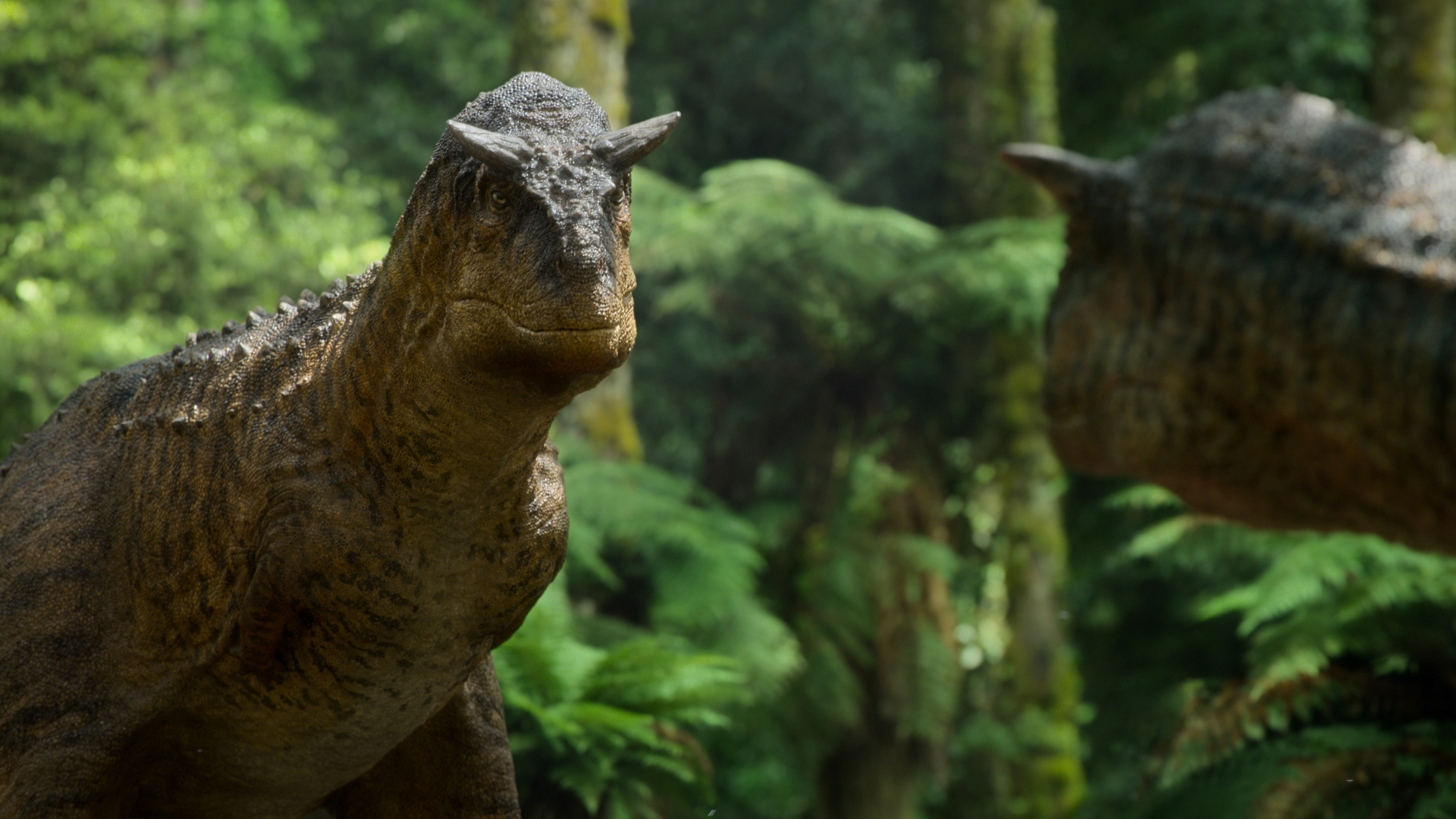“Prehistoric Planet” sends viewers back in time on a guided tour of the Cretaceous period with Sir David Attenborough, in a documentary series that reimagines familiar dinosaurs such as the mighty Tyrannosaurus rex and introduces lesser-known creatures like the charming owl-like Mononykus.
The show portrays the extinct creatures moving and behaving with a level of realism that has never been seen before in movies or television. And if you draw back the curtain and peer backstage, you’ll find the work that went on behind the scenes of the groundbreaking series is almost as impressive as the dinosaurs themselves, from perilous treks in the desert to Sherlock Holmes-like deductions of dinosaur anatomy and behavior.
“Prehistoric Planet” debuted on Apple TV+ on May 23, and all the episodes are now available to stream. This is our behind-the-scenes coverage of the show, so if you don’t want to know how the sauce was made, check out our “Prehistoric Planet” preview instead.
The series paired the BBC Studios Natural History Unit — the group behind award-winning nature documentaries like “Planet Earth” (BBC 2006) — with the Moving Picture Company’s visual effects team, which has worked on 3D animated movies like “The Lion King” (Walt Disney Pictures, 2019). This combined team went to extraordinary lengths to make “Prehistoric Planet” feel as authentic and close to a modern nature documentary as possible.
“Everything starts with the fossil record,” showrunner Tim Walker told Live Science at a behind-the-scenes press tour. The team studied ancient landscapes and vegetation to find modern habitats that could pass for the Cretaceous period so they could film in real-world locations. “It’s surprising that now, 66 million years on, that there’s a lot of things that are very similar to what they were then,” Walker said.
Researchers aboard the research vessel the Nautilus spotted this sea cucumber using an ROV. The sea cucumber was gliding through the sea at a depth of some 7,221 feet in the Pacific Remote Islands Marine National Monument southeast of Honolulu. Credit: Nautilus Live/Ocean Exploration Trust
From searing deserts to lush jungles, the habitats that dinosaurs called home often still exist in some form today. The film crews traveled to these locations and used life-size physical objects, such as cardboard cutouts and 3D-printed puppets, as stand-ins for the long-extinct dinosaurs.
These dino stand-ins were a point of reference for the filmmakers and special effects team, enabling the creators to see how much space the animals would take up and how they would move in their environments. Some animals were far too big to be puppets or cutouts — imagine walking through the desert carrying enormous, long-necked sauropods made out of cardboard — so the team used long boom poles and drones to capture the eye-line and scale of really giant creatures.
“Just because there are no animals there to film doesn’t mean you don’t go through hardships,” Walker said. The crew encountered deadly venomous snakes and the footprints of lions in their faux-Cretaceous scenes. They were so committed to authenticity that before the team decided where to place their cameras they considered how living dinosaurs might react to human observers.
“You could never ask the camera person to go and stand in front of a T. rex ’cause he would eat them!” executive producer Mike Gunton said at the press tour. “So, you have to stand back.”
The crew didn’t just have cameras and stand-in models; they were also equipped with laser-shooting light detection and ranging (lidar) scanners for modeling environments, and high dynamic range (HDR) imaging equipment to measure light, enabling visual effects specialists to recreate natural environments and lighting in 3D space when adding the CGI dinosaurs.

The visual effects team designed the dinosaurs on computers, starting with skeletons based on fossil scans, and then adding muscles and skin. The appearance, motion and behavior of the dinosaurs were inspired by evidence from paleontology, contemporary biology and other scientific disciplines such as biomechanics — the study of biological structures and mechanisms that control how animals move.
Gunton described their approach as being like “Sherlock Holmes,” pulling together information from various sources and threading it together with the help of scientific advisors. A scene in the “Deserts” episode highlights how animators used this approach to show viewers the unexpected: two sauropods in the genus Dreadnoughtus wrestling and stabbing each other with deadly looking arm spines.
“These are big, apparently docile, herbivorous animals,” Gunton said. “Yet on their forelimbs are these two massive great spikes. Now they don’t use those for picking their nose!”
When the fossil evidence didn’t have all the answers, the team used a scientific technique known as phylogenetic bracketing. This practice enabled them to infer the likelihood of unknown dinosaur traits — such as vocalizations or other kinds of social behavior — based on the characteristics of related animals in their family tree, or of unrelated animals with a similar lifestyle.
For example, the team looked at crocodiles, iguanas and birds for inspiration when animating the movement of a T. rex‘s head during a courtship scene in the “Freshwater” episode, and the creators referenced large herbivores such as elephants and rhinos to inform the movements of extinct herbivores such as Dreadnoughtus.
“Everything we do in the visual effect process, we are trying to replicate reality,” visual effects supervisor Elliot Newman said at the press tour. “There’s no better way of doing that than looking at real things.”